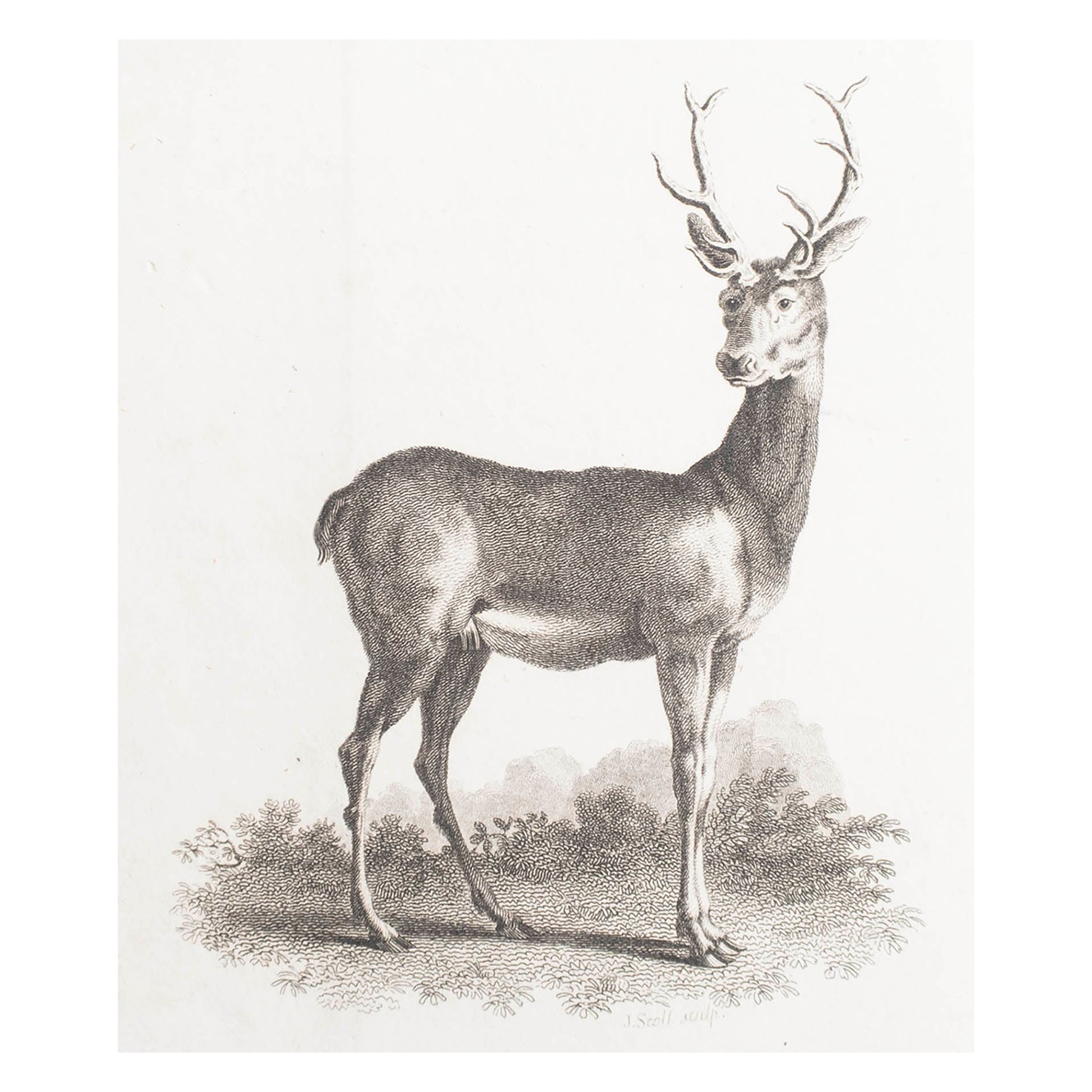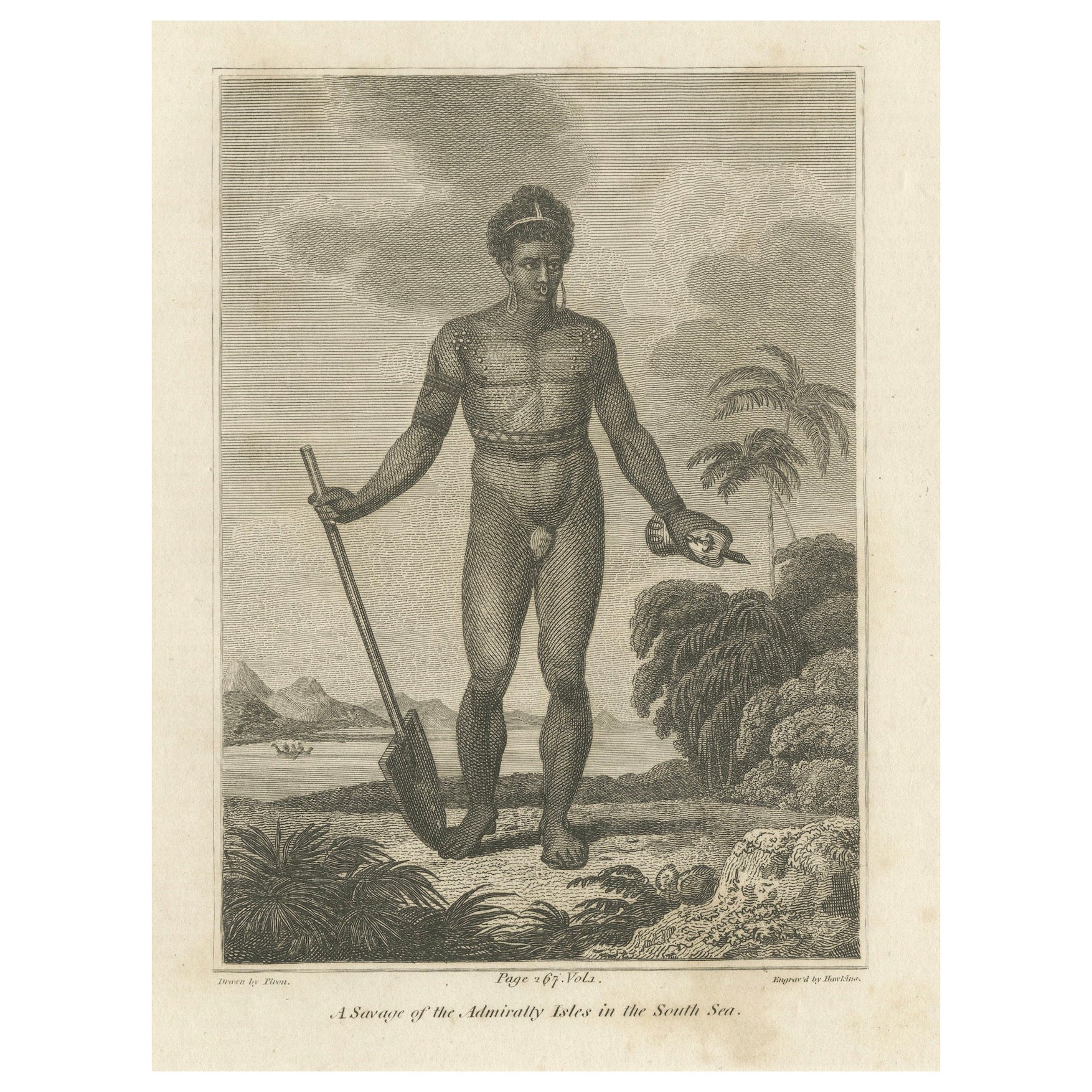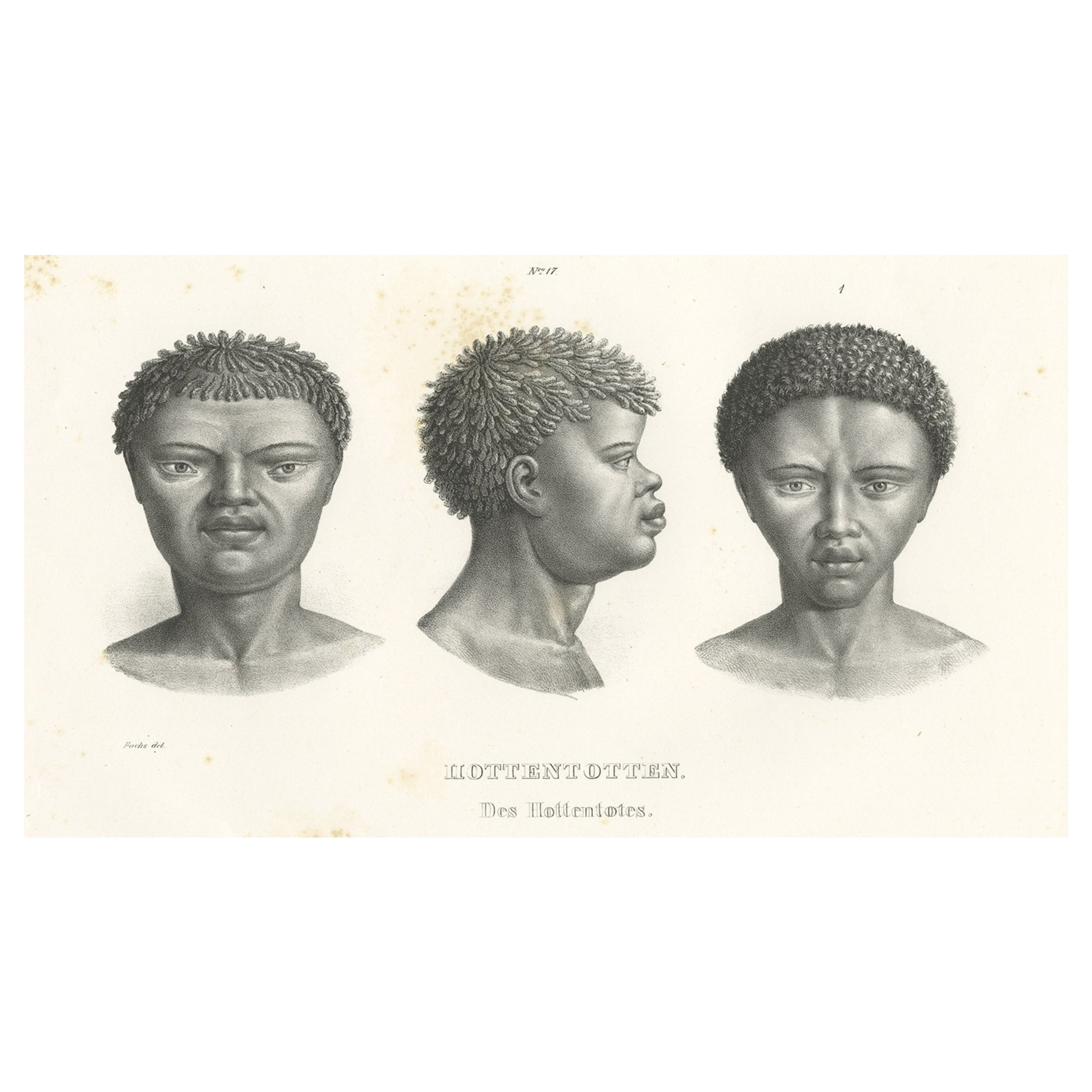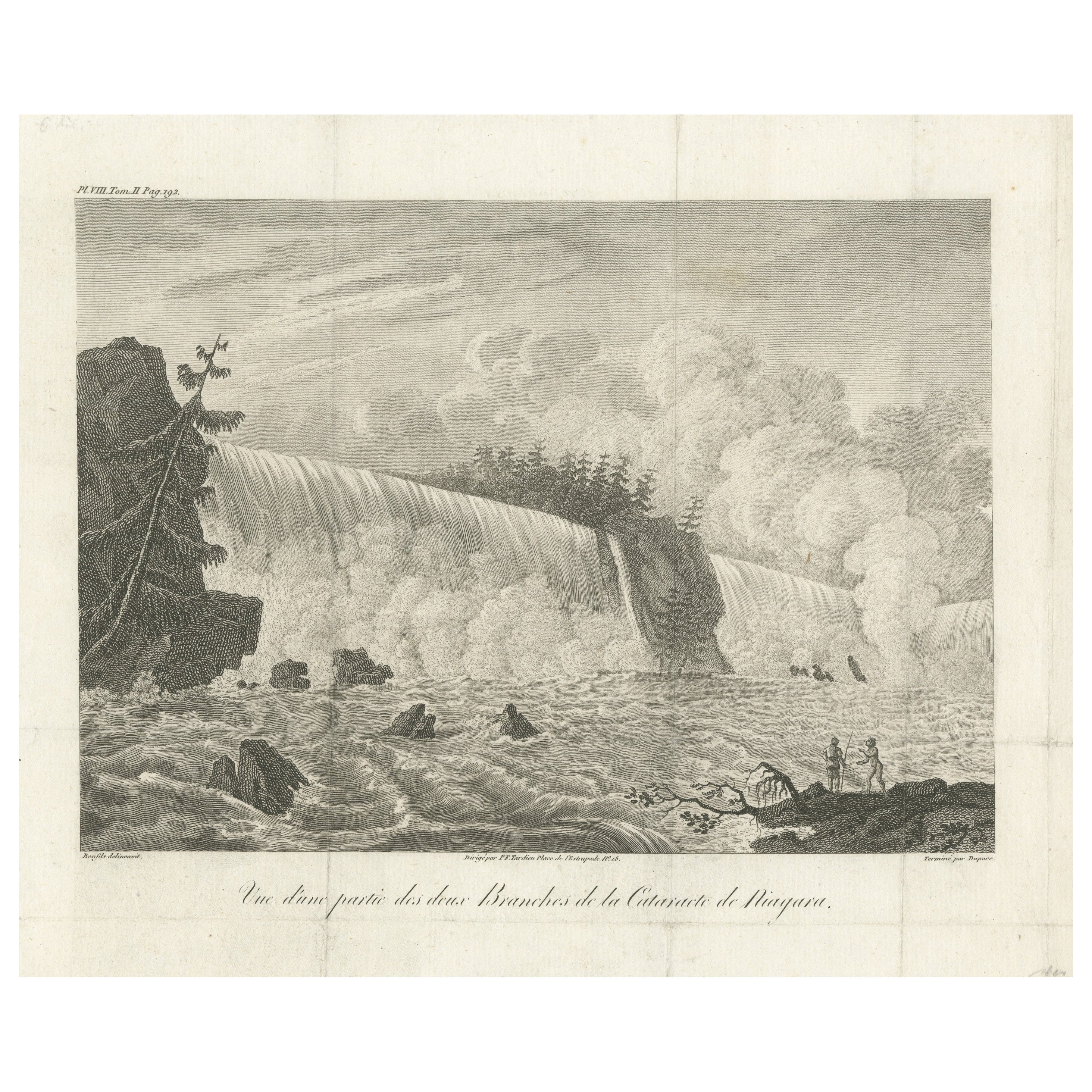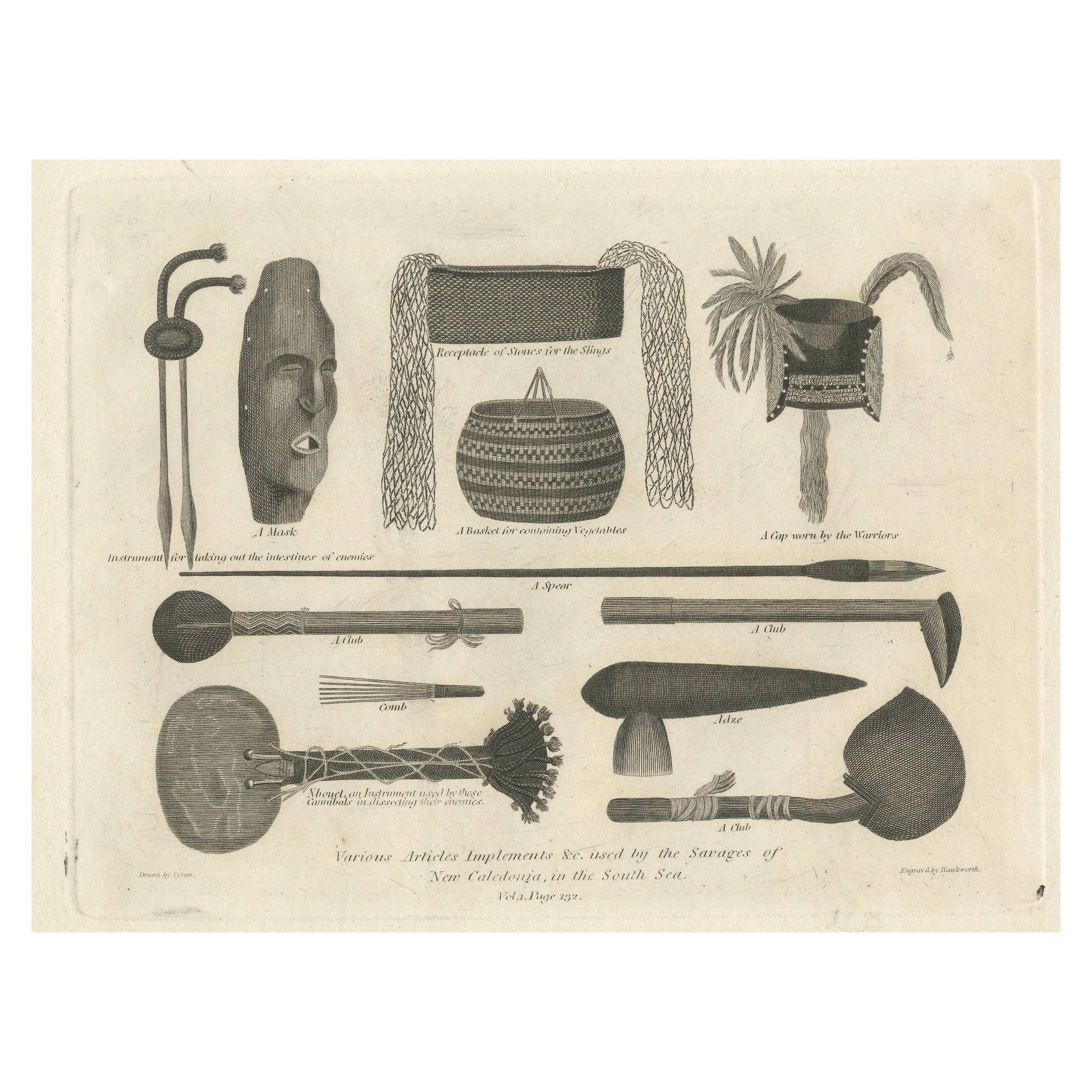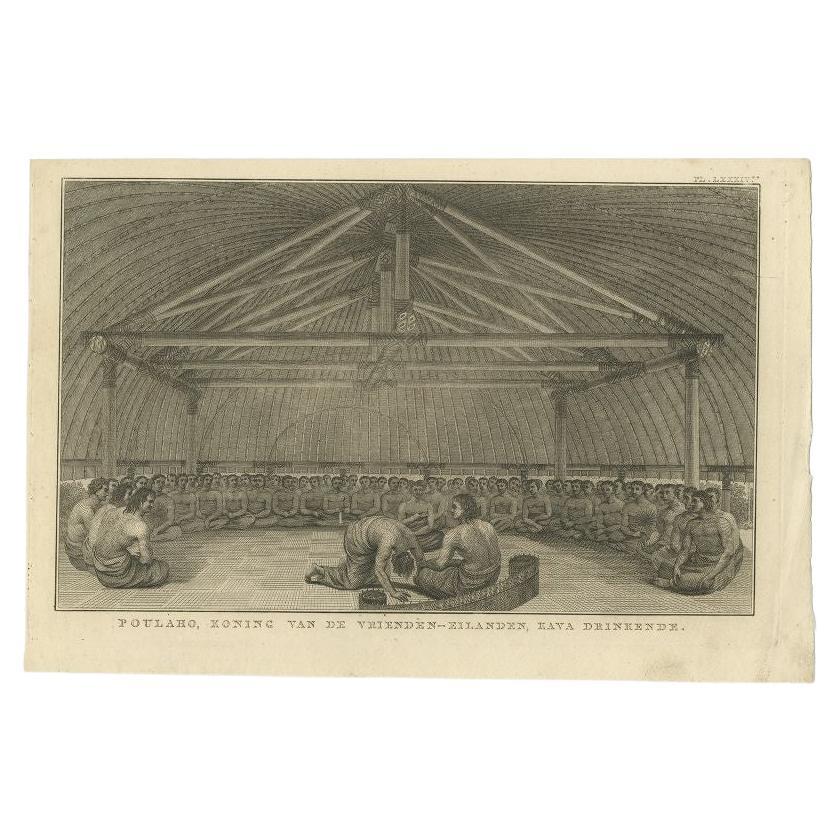Items Similar to The Khoikhoi of Southwestern Africa, Original Engraving of circa 1801
Want more images or videos?
Request additional images or videos from the seller
1 of 6
The Khoikhoi of Southwestern Africa, Original Engraving of circa 1801
About the Item
The print is an early 19th-century engraving depicting the Khoikhoi people, historically referred to as the Hottentots, which is an outdated term. The Khoikhoi are indigenous inhabitants of the southwestern regions of Africa.
The image is labeled as "HOTTENTOT Men, Women, and Children," suggesting it was meant to illustrate the life and appearance of the Khoikhoi people. It was published in London by C. Cooke for a work titled "Modern & Authentic System of Universal Geography." As for the engraver, it is not specified on the print itself, but it may be identifiable through historical records related to the publication. The title for the print could be "The Khoikhoi of Southwestern Africa" to modernize the terminology and accurately reflect the subject. The year of publication is not given, but since it was intended for a geography system, it could date from the late 18th to early 19th century, a common period for such works.
Description: This is a circa 1801 copperplate engraving from George Alexander Cooke's "Universal Geography" .
The print is part of George Alexander Cooke's comprehensive work "A Modern and Authentic System of Universal Geography." This book was a significant compilation of geographical knowledge during the late 18th century, offering descriptions and accounts of various parts of the world, influenced by the age of exploration. It includes narratives of famed explorers like Captain James Cook and Ferdinand Magellan, detailing their discoveries and journeys that expanded the European understanding of the globe. Cooke's work served as both a chronicle and reference for the territories and cultures encountered by these voyagers.
- Dimensions:Height: 10.44 in (26.5 cm)Width: 7.88 in (20 cm)Depth: 0 in (0.02 mm)
- Materials and Techniques:Paper,Engraved
- Period:
- Date of Manufacture:circa 1801
- Condition:Good condition. This is not a reproduction but an original engraving. Study the image carefully.
- Seller Location:Langweer, NL
- Reference Number:
About the Seller
5.0
Platinum Seller
These expertly vetted sellers are 1stDibs' most experienced sellers and are rated highest by our customers.
Established in 2009
1stDibs seller since 2017
1,947 sales on 1stDibs
Typical response time: <1 hour
- ShippingRetrieving quote...Ships From: Langweer, Netherlands
- Return PolicyA return for this item may be initiated within 14 days of delivery.
More From This SellerView All
- Engraving of A Savage of the Admiralty Isles in the Bismarck Archipelago, 1801Located in Langweer, NLThe 1801 engraving depicts a figure labeled as "A Savage of the Admiralty Isles in the South Sea." The image portrays a solitary indigenous man standing with a paddle in hand, exudin...Category
Antique Early 1800s Prints
MaterialsPaper
- Antique Print of Khoikhoi, Hottentot Tribe in South Africa, C.1845Located in Langweer, NLAntique print titled 'Hottentotten, des Hottentotes'. This print depicts Khoikhoi or Khoi people, formerly called Hottentots. Originates from 'Naturgeschichte und Abbildungen des Men...Category
Antique 19th Century Prints
MaterialsPaper
- Rare French Engraving of the Niagara Waterfalls in Ontario, Canada, 1801Located in Langweer, NLTitle: Vue d'une partie des deux Branches de la Cataracte de Niagara. Dirigé par P.F. Tardieu, Place de l'Estrapade No. 18. Upper Left: Pl.VIII, Tom.II Pag.192. Lower Left: Bonfil...Category
Antique Early 1800s Prints
MaterialsPaper
- 1801 Engraving of New Caledonian Implements and AttireLocated in Langweer, NLVarious Articles Implements And Used By The Savages Of New Caledonia In The South Sea Description: This 1801 copperplate engraving from George Alexander Cooke's "Universal Geography" displays various tools and clothing of the indigenous people of New Caledonia in the South Sea. Items depicted include a mask, a basket for containing feathers, a warrior's cap, instruments for tattooing, a club, a spear, and other artifacts integral to the daily and ceremonial life of the New Caledonian people. The engraving provides a visual documentation of the cultural artifacts encountered by explorers like Captain James Cook during their voyages. The print includes various items used by the indigenous people of New Caledonia: 1. A mask, likely used in rituals or ceremonies. 2. A basket for containing feathers, possibly for storage or transport of valuable items. 3. A cap worn by warriors, part of their traditional attire. 4. Tattooing instruments for marking the skin with cultural or status symbols. 5. A club, which could be a weapon or a symbol of power. 6. A spear, used for hunting or as a weapon. 7. An adze, a tool for woodworking...Category
Antique Early 1800s Prints
MaterialsPaper
- Engraving of King Poulaho of the Friendly Islands (Tonga) drinking Cava, ca.1801Located in Langweer, NLAntique print titled 'Poulaho, Koning van de Vrienden-Eilanden, Kava drinkende'. This print depicts King Poulaho drinking Cava. Originates from 'Reizen rondom de Waereld' by J. Cook....Category
Antique 19th Century Prints
MaterialsPaper
- Antique Print of the Cemetery on the Island Tongatapu by Cook, circa 1801Located in Langweer, NLAntique print titled 'Fiatooka of Kerkhof van het Eiland van Tongataboo'. This print depicts a cemetery on the Island of Tongatapu. Originates from 'Reizen rondom de Waereld' by J. C...Category
Antique Early 19th Century Prints
MaterialsPaper
You May Also Like
- Original Antique Print of A Stag, Circa 1801Located in St Annes, LancashireGreat image of a stag Copper-plate engraving Published by Bunny and Gold . Dated 1801 Unframed.Category
Antique Early 1800s English Georgian Prints
MaterialsPaper
- "The Battle of Bunker's Hill, Near Boston" Engraving by James Mitan, 1801By John TrumbullLocated in Colorado Springs, COThis dramatic Revolutionary War engraving of the Battle of Bunker Hill is after the famous 1785 oil-on-canvas by John Trumbull. Capturing the intensity of the battle, the engraving centers on Major John Small restraining a “lobster-back” from bayoneting Major General Joseph Warren. Warren lies mortally wounded in the midst of chaos around him. In the background, British forces are seen cresting the last defenses of the brave, yet green army of Colonial soldiers. The Battle of Bunker Hill was fought on June 17, 1775, in the early stages of the American Revolutionary War. The battle is named after Bunker Hill in Charlestown, Massachusetts. Although it was the original objective of both the Colonial and British troops, the area was only peripherally involved in the battle. Rather, the majority of the combat took place on the adjacent Breed’s Hill. The battle pitted a more organized British force against a young and inexperienced American militia. Although considered a tactical victory for the British, it came at the cost of considerable casualties, including a large number of officers. The battle demonstrated that the inexperienced American militia was able to stand up to the British army troops in battle. The battle results discouraged the British from any further frontal attacks against well-defended front lines. American casualties were comparatively fewer, although their losses included Gen. Joseph Warren. During the battle, the patriot-turned-painter John Trumbull (1756-1843) was stationed in Roxbury on the far side of Boston, where he could hear the sounds of fighting. In late 1785, Trumbull decided to devote himself to the depiction of Revolutionary War scenes, a series of eight epic pictures. From the beginning, Trumbull intended for the paintings to be later engraved for sale. Trumbull began the oil-on-canvas of The Death of General Warren at the Battle of Bunker’s Hill and The Death of General Montgomery in the Attack of Quebec, in the studio of Benjamin West in London. Bunker’s Hill was completed in March 1786; Trumbull started Attack of Quebec in February 1785 and finished it before he brought it to Paris in 1786. He then started The Declaration of Independence at Thomas Jefferson's house in Paris. As soon as Bunker’s Hill was completed, Trumbull searched for a suitable engraver in London. He was unsuccessful, as many British engravers were nervous about engraving an American battle...Category
Antique Early 1800s English Federal Prints
MaterialsPaper
- Set of 12 Original Antique Sporting Prints. Dated 1801Located in St Annes, LancashireGreat set of 12 sporting prints Copper-plate engravings after the original drawings mainly by Gilpin Published by Bunney & Gold, London Unfra...Category
Antique Early 1800s English Folk Art Prints
MaterialsPaper
- Original Piranesi Framed Engraving of a Monument in the Form of a CornucopiaBy Giovanni Battista PiranesiLocated in San Francisco, CAGiovanni Battista Piranesi, Italian 1720-1778) Engraving on wove paper depicting an ancient Roman funeral monument in the form of a cornucopia from the Via...Category
Antique Early 19th Century French Neoclassical Prints
MaterialsPaper
- Set of 4, Natural History of the Animal Kingdom Engravings Circa 1860Located in Atlanta, GASet of 4, Natural History of the Animal Kingdom Engravings Circa 1860. Each of these finely hand colored book plate engravings feature animals from all over the world. This series f...Category
Antique 19th Century Prints
MaterialsGlass, Wood, Paper
- Selection of Modern Engravings, circa 1938Located in Atlanta, GASelection of Modern Engravings, from a limited edition published in the December 1938 issue of the ground breaking modern art magazine XXe. They are framed in clean lined black lacquered wood gallery frames. They are priced at $550 each. From left to right, top to bottom, they are: 1) Henri Matisse 2) Henri Laurens 3) Juan Miro...Category
Vintage 1930s French Mid-Century Modern Prints
MaterialsPaper
